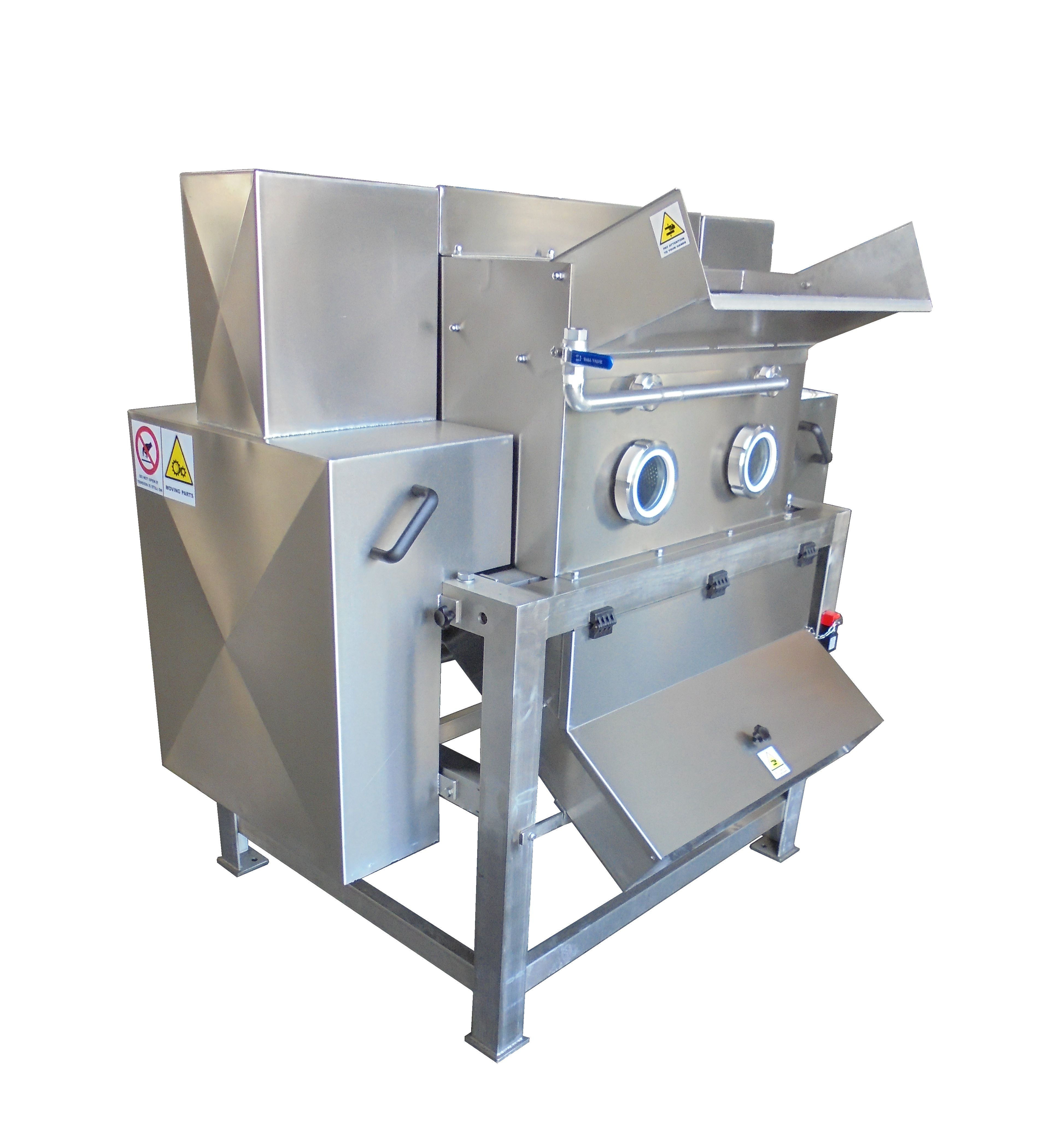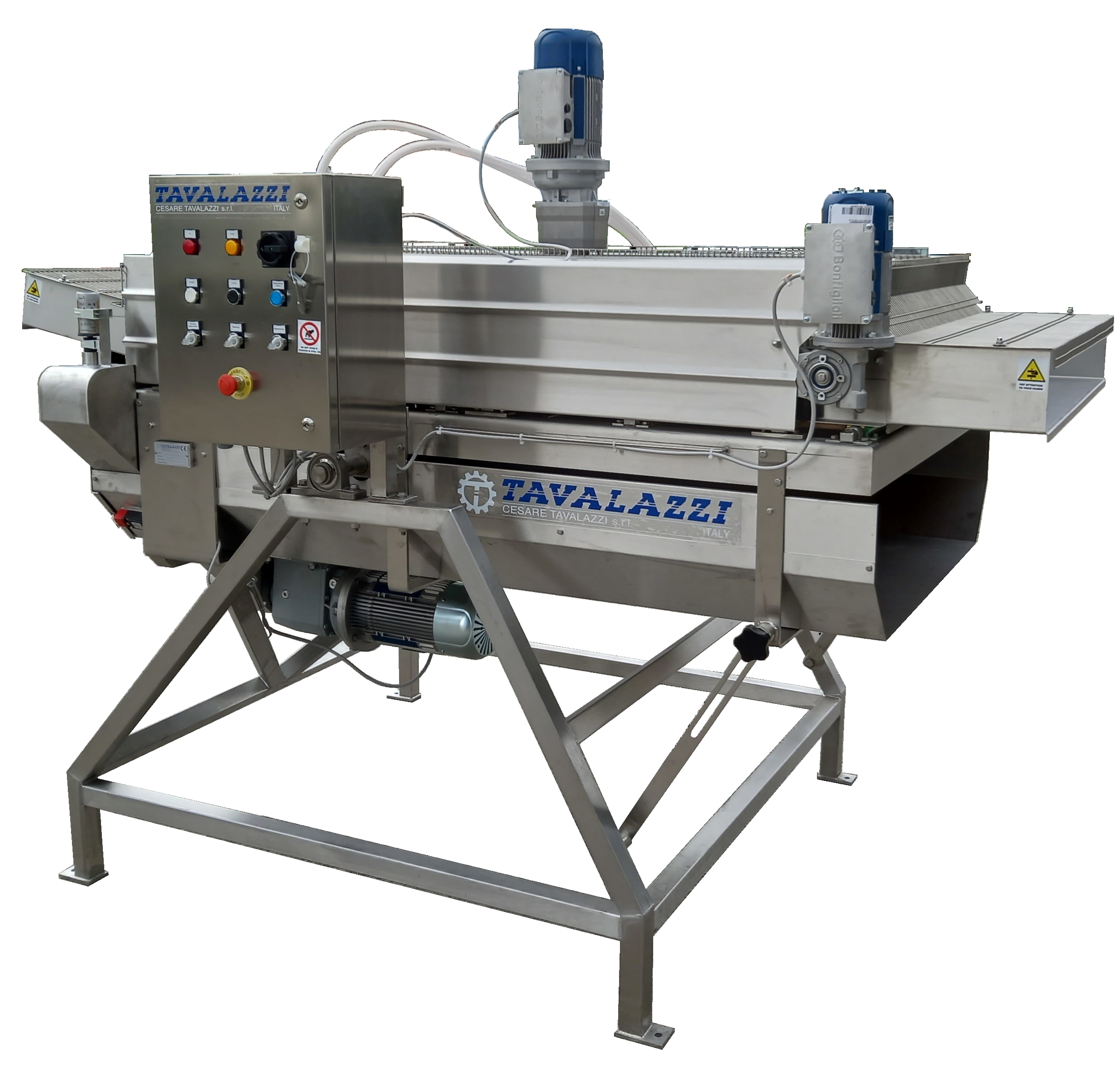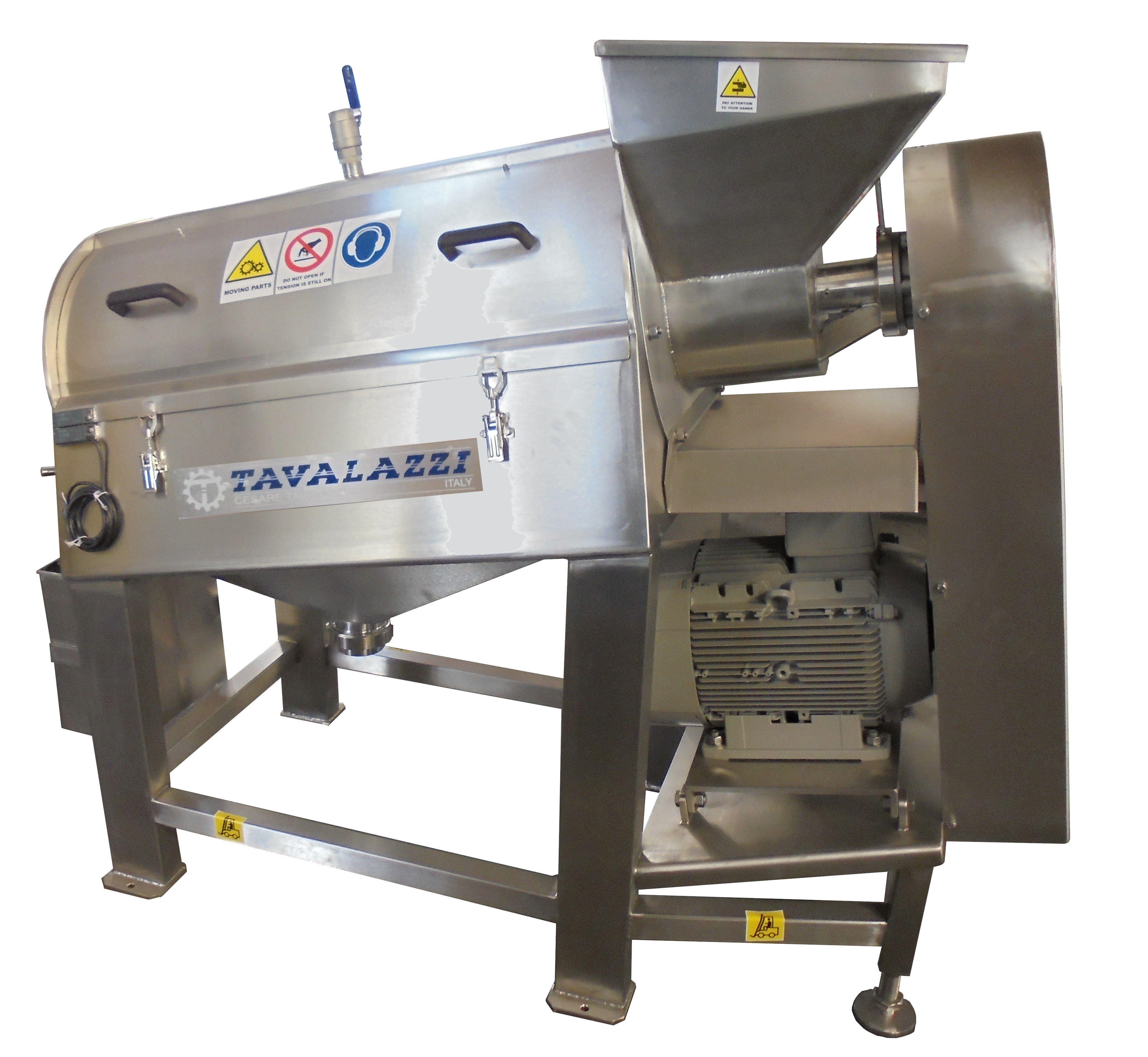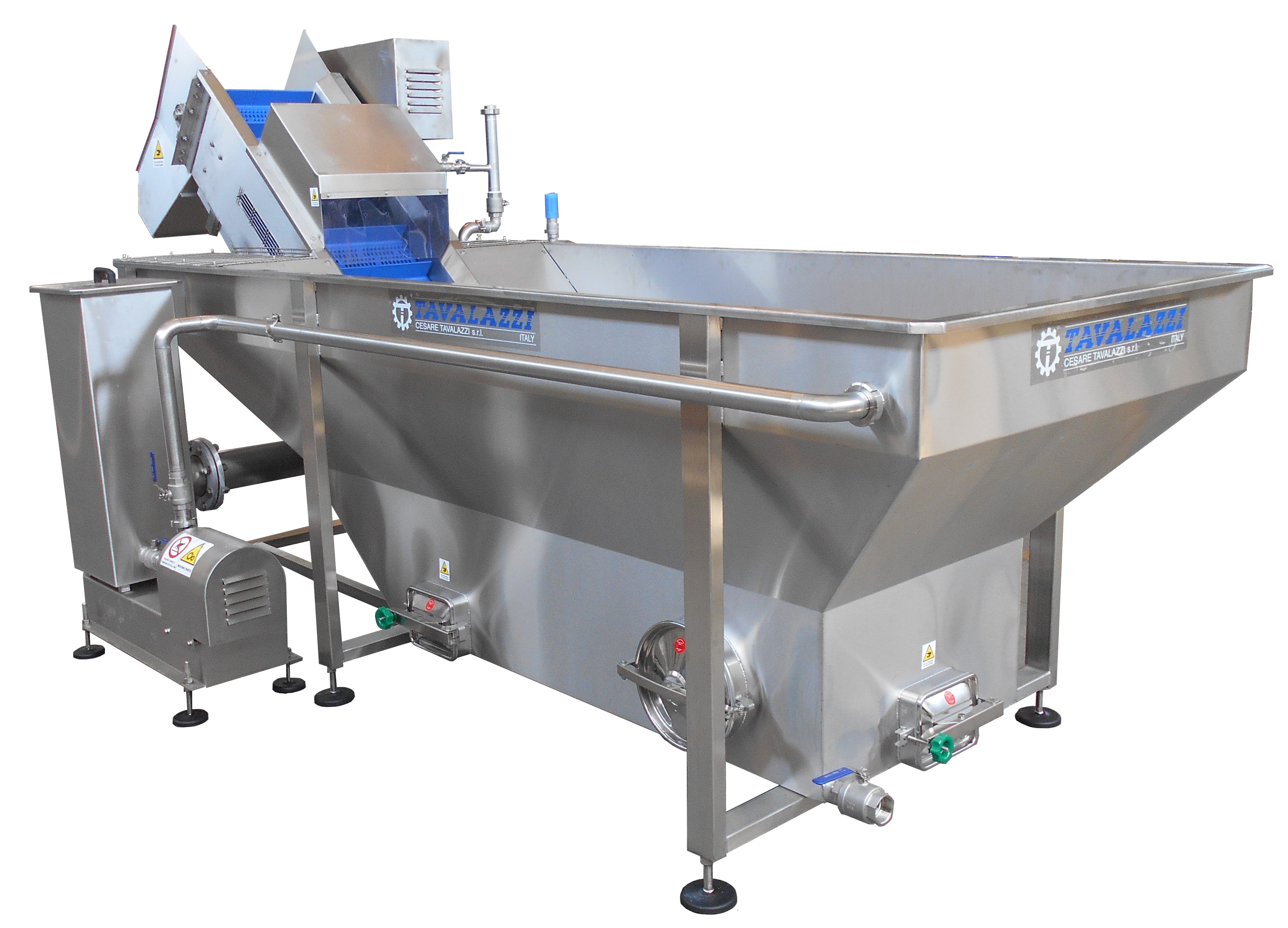- About us
- Company details
Cesare Tavalazzi srl was set up in Massa Lombarda – Italy, in the heart of the nectarine growing region. It began operating and gaining experience in the field of manufacturing of the first rotary destoners for peaches and cherries and machines for processing Mediterranean fruit applying traditional methods. Over the years, the range of products has significantly widened, thanks to the continuous development of design and constant research and innovation, targeted to ever demanding national and international customers.
Our main purpose has always been fruit processing, manufacturing made-to-measure machines and systems, customizing them according to our customers’ requirements. For this reason, we have specialized from the reception up to the pulp/purée of all types of fruit, with or without stone, Mediterranean and tropical fruit (mango, avocado, passion fruit), mixed berries, etc…
Year of establishment:
1985
Number of employees:
FROM 10 TO 19 EMPLOYEES
Annual turnover:
between 0.5 and 2.5 million Euro
Reference year of turnover:
2022
Export turnover:
From 75.000 to 250.000 Euro
Activities:
Manufacture of machinery for food, beverage and tobacco processing
- Contact Information
- Business Proposals
Company:
CESARE TAVALAZZI S.R.L.
Web site:
Address:
BAGNAROLO 12/E
City:
MASSA LOMBARDA (RA)
Zip Code:
48024
Tag:
No business proposals uploaded
- Map
ROTARY DESTONING MACHINE

The rotary destoning machine is designed to eliminate the stones of various kinds of fruit, such as peaches, apricots, prunes and cherries, producing pulp.
The fruit is pushed by a guillotine between 2 rollers rotating towards each other (one with a rubber surface and the other with toothed-disks) and is separated from the stone by being squashed.
The squashed pulp between the teeth of the disk is removed by a comb.
A special sorter guarantees the total separation of the nuts from the pulp.
USES
In the Food Processing Industry, it can directly process the above mentioned products, either alone or on a production line after the previous stages of washing, sorting, de-stalking and before the successive stages of heating and refining in the preparation of jams.
FEATURES
• Processing capacity: from 400 kg/h to 25’000 kg/h.
• Made entirely of STAINLESS STEEL.
• Frame composed of a strong structure of profiles.
• Fixed rotating roller composed of a series of stainless steel toothed-disks (the teeth and the thickness of the disks change according to the type of fruit to be destoned), together with a comb to extract the pulp.
• Mobile rotating roller composed of a stainless steel core covered with natural white rubber.
• Guillotine and stone-pulp sorter, easily adjustable according to the type of fruit.
• Transmission is given by a chain connected to one gearmotor with an orthogonal shaft.
• Double inner washing manifold
DESTALKING MACHINE

The de-stalking machine has the function of eliminating the stalks from cherries, prunes and strawberries, guaranteeing an excellent yield and delicate treatment of the fruit.
The product introduced into the infeed hopper, is distributed over a conveyor belt of rollers covered with food rubber that, rotating in pairs and in opposite directions, pulls the stalks, the small leaves and the impurities into the waste collecting hopper below.
A grid with an elliptical movement placed above the rollers and the adjustable angle of the conveyor belt facilitate the processing operation.
A piping system provides for the washing of the product during the de-stalking process.
To obtain an excellent yield, for processing cherries, our “Debunching Machine” should be positioned before the de-stalking machine, in order to separate the little bunches.
USES:
In the Food Processing Industry, it can directly process the above-mentioned products, either alone or on a production line before the de-stoning and refining stages, in the production of purées and jams.
In the Transformation-Freezing Industry, it can process cherries and strawberries, before the gauging and punch destoning stages.
FEATURES:
• Made entirely of STAINLESS STEEL.
• Rectangular structure in thick modelled steel, fixed to a structure of profiles standing on 4 legs.
• Wheel to adjust the inclination of the structure.
• Conveyor belt composed of rods in food rubber with a stainless-steel core.
• The rods are driven by a single stainless-steel chain connected to a gearmotor.
• Grid with an elliptical movement, placed above the conveyor belt, driven by a gearmotor.
• Piping system for washing the product.
• Infeed and discharging hoppers, and a waste-collecting hopper.
DEPULPING - REFINING MACHINES

DEPULPER / DEPULPING MACHINE
The depulper is suitable both for destoning ripe fruit and for cleaning the stones of the fruit previously processed with the Rotary Destoner.
As a stones depulper, it can process fruits as peaches, apricots, prunes and cherries.
As a depulping machine, adequately equipped and adjusted, it is suitable for de-stoning cherries, ripe apricots and peaches, mango (cooked or not), avocado, olives and dates.
The machine is fed by an infeed hopper containing a screw, which ensures a regular flow to the area of the beaters, rotating at high speed and centrifuging the product.
The purée passes through the sieve holes and falls into the discharging hopper, while the stones and other wastes exit from the rear part of the machine. The diameter of the holes in the sieve changes according to the product.
USES:
In the Food Processing Industry, it can directly process the above-mentioned products, either alone, as into a processing line.
FEATURES:
• Made entirely of STAINLESS STEEL.
• Particularly strong and large sized structure.
• Rotor constituted of a central shaft, on which the adjustable beaters are fitted (they can be in stainless steel or in special rubber).
• Perforated stainless steel sieve, fast and easy to change.
• Product infeed hopper, stones and waste-collecting hopper, purée receiving hopper with DN coupling.
• Easily opened inspection covers equipped with safety microswitch.
• Inner washing manifold.
• Rotor driven by electric motor with trapezoidal belt transmission.
SIEVING- REFINING MACHINE
The sieving-refining machine has the purpose of refining various types of ripe or pre-cooked fruit and vegetables.
Various models are available with one or two processing stages (with single or double body), and according to the type of product to be processed and the required characteristics of the finished product.
The machine is fed by a hopper or by a DN connection.
The product entering the sieve is centrifuged by the beaters rotating at high speed.
The purée passes through the holes in the sieve and falls into the discharging hopper, while the wastes (skins, seeds, etc.) exit from the rear part of the machine.
The diameter of the holes in the sieve varies according to the product.
USES:
In the Preserved Food Industry, for fruit, tomatoes, mangoes and other tropical fruit to be transformed into purées and juices.
In Distilleries, it can refine grape dregs and other fermented products.
FEATURES:
• Made entirely of STAINLESS STEEL.
• Particularly strong and large sized structure.
• Rotor constituted of a central shaft, on which the adjustable beaters are fitted (they can be in stainless steel or in special rubber).
• Perforated stainless steel sieve, fast and easy to change.
• Product infeed hopper, waste-collecting hopper, purée receiving hopper with DN coupling.
• Easily opened inspection covers equipped with safety microswitch.
• Inner washing manifold.
• Rotor driven by electric motor with trapezoidal belt transmission.
WASHING RECEIVING TANK WITH ELEVATOR

The washing tank with elevator is used for washing different types of fruit and vegetables and it is entirely made of stainless steel except for the elevator belt.
The unit is made up of:
Washing tank: The product is washed by means of the forced turbulent water flow and by the air that is sent from a compressor on the bottom of the tank.
Elevator: The modular elevator conveys products from the washing tank to the following machine going through a series of nozzles that rinse products while going back up; thanks to the pierced conveyor belt, products are drained for the first time.
The machine size depends on the product to be processed and on the requested hourly production. The machine has been built in order to facilitate its cleaning, inspection and maintenance.


